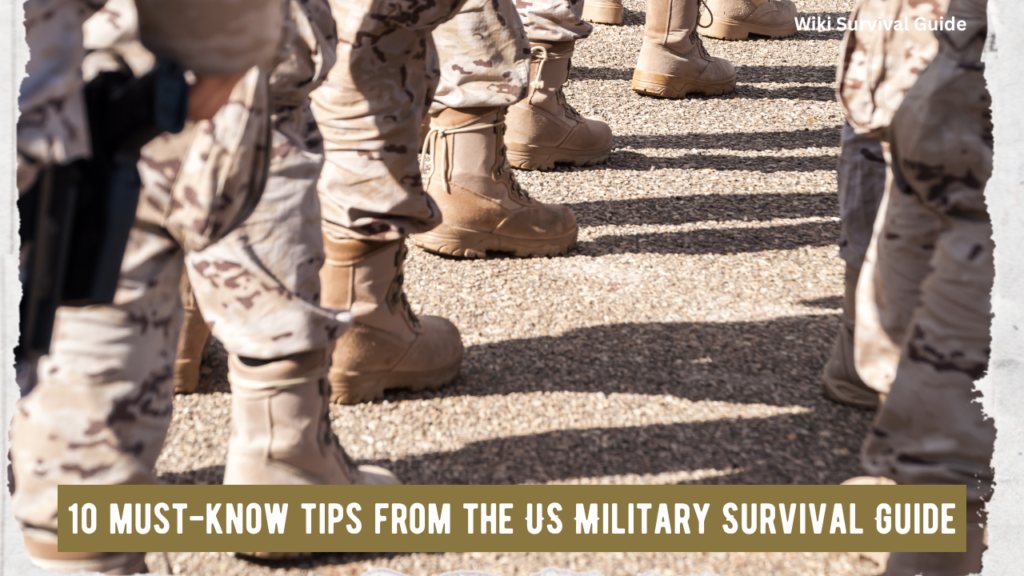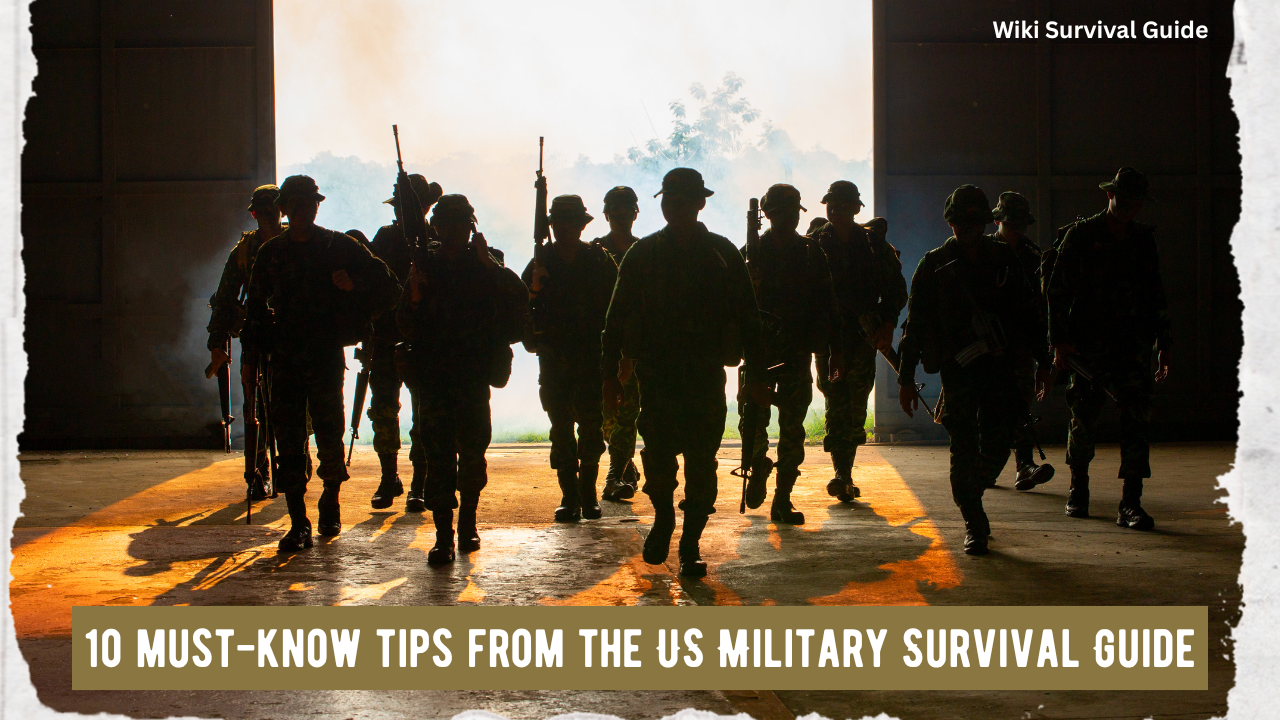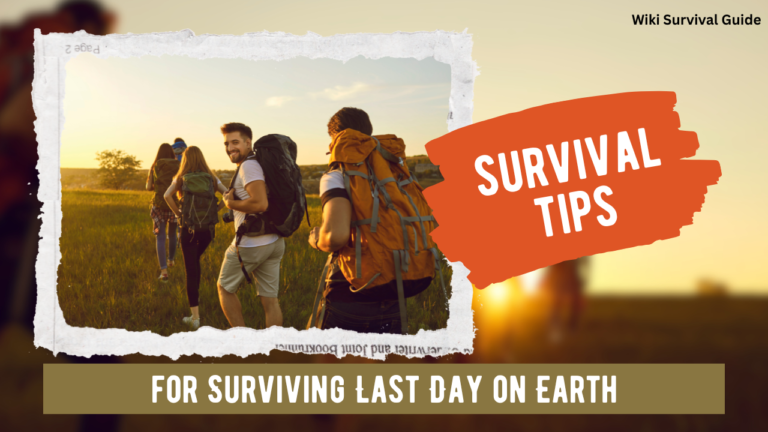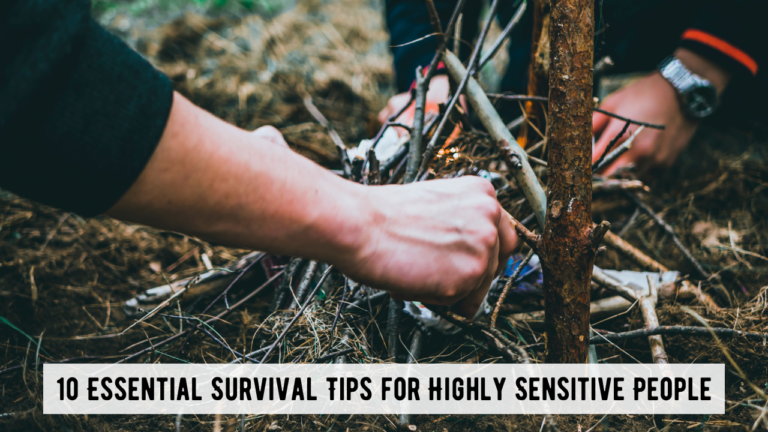Discover 10 must-know tips from the US Military Survival Guide for any crisis! Techrefly.com shares battle-tested strategies from the US Army to survive disasters in 2025. Master these skills to stay safe, whether facing natural disasters or urban emergencies.
Why Military Survival Skills Matter
The US Army Survival Manual (FM 3-05.70) equips soldiers for extreme conditions, from jungles to urban war zones. These skills—honed over decades—apply to civilians facing crises like hurricanes, blackouts, or societal unrest. In 2025, with rising climate risks, preparedness is critical for tech-savvy survivalists. Check More Here:- 220+ Essential Tips for Surviving Last Day on Earth
The Psychology of Survival
Survival starts with mindset. The military emphasizes staying calm, assessing threats, and prioritizing needs (water, shelter, food). Panic wastes energy; focus preserves it. These tips teach you to adapt, whether stranded in the wilderness or navigating a city lockdown.
Who Needs These Skills?
Anyone can face a crisis—floods, earthquakes, or power grid failures don’t discriminate. Tech-driven readers, reliant on GPS or apps, benefit from analog skills like map-reading or fire-starting. These military techniques ensure resilience when technology fails.

How to Use This Guide
This guide distills US Army survival strategies into 10 practical tips, each with detailed steps and tools. From building shelters to signaling for help, these methods are beginner-friendly yet robust. Practice them to thrive in 2025’s unpredictable world.
Survival Tips Overview Table
| Tip Number | Skill | Environment Suitability | Difficulty Level |
|---|---|---|---|
| 1 | Prioritize Water | All | Easy |
| 2 | Build a Shelter | Wilderness/Urban | Moderate |
| 3 | Start a Fire | Wilderness | Moderate |
| 4 | Navigate Without GPS | All | Moderate |
| 5 | Signal for Help | All | Easy |
| 6 | Administer First Aid | All | Moderate |
| 7 | Find Food Safely | Wilderness | Hard |
| 8 | Use Camouflage | Wilderness/Urban | Moderate |
| 9 | Communicate Undetected | All | Moderate |
| 10 | Prepare a Survival Kit | All | Easy |
10 Must-Know Survival Tips
1. Prioritize Water Procurement and Purification
Why It Matters: You can survive 3 days without water; dehydration kills faster than starvation.
Process: Locate water via signs (animal tracks, green vegetation). Collect using a container or tarp to catch dew. Purify by boiling (10 min) or using tablets (follow dosage). If no tools, filter through cloth and expose to sunlight for 6 hours. Takes 30–60 min.
Tools: Pot, purification tablets, cloth, plastic sheet.
Tip: Avoid drinking unpurified water to prevent infections.
2. Build a Shelter to Stay Protected
Why It Matters: Exposure to cold, heat, or rain can cause hypothermia or heatstroke.
Process: In wilderness, build a lean-to: angle branches against a tree, cover with leaves (12-inch layer). In urban settings, use tarps or debris to block wind. Insulate with blankets or dry grass. Ensure ventilation. Takes 1–2 hours.
Tools: Tarp, paracord, knife, branches.
Tip: Blend shelter with surroundings to avoid detection.
3. Start a Fire for Warmth and Cooking
Why It Matters: Fire provides heat, purifies water, and signals rescuers.
Process: Gather dry tinder (leaves, bark), kindling (small sticks), and fuel (logs). Use flint and steel: strike to create sparks, catch on tinder, blow gently. Build a teepee fire structure. Maintain with small logs. Takes 15–30 min.
Tools: Flint and steel, matches, dry tinder.
Tip: Keep fires small to conserve fuel and avoid detection.
4. Navigate Without GPS Using Map and Compass
Why It Matters: GPS may fail in crises; land navigation ensures you find safety.
Process: Orient a topographic map with a compass (align magnetic north). Identify landmarks (hills, rivers). Plot your route, noting bearings (e.g., 45° NE). Pace count (100 steps = ~100 meters) tracks distance. Takes 20–60 min to learn.
Tools: Compass, topographic map, pencil.
Tip: Practice in familiar areas before a crisis.
5. Signal for Help to Attract Rescuers
Why It Matters: Signaling speeds up rescue in remote or chaotic settings.
Process: Use a mirror to reflect sunlight (aim at aircraft). At night, flash a flashlight in SOS pattern (3 short, 3 long, 3 short). Create ground signals with rocks or logs (e.g., “X” for distress). Takes 5–30 min.
Tools: Signal mirror, flashlight, whistle.
Tip: Place signals in open areas for visibility.
6. Administer Basic First Aid
Why It Matters: Treating injuries prevents infection or death.
Process: For bleeding, apply direct pressure with a clean cloth; elevate if possible. For fractures, immobilize with a splint (sticks, cloth). Clean wounds with boiled water. Use CPR for unconscious victims (30 chest compressions, 2 breaths). Takes 5–20 min.
Tools: First aid kit, cloth, sticks, antiseptic.
Tip: Take a first aid course for confidence.
7. Find Food Safely in the Wilderness
Why It Matters: Food sustains energy, but unsafe choices cause illness.
Process: Identify edible plants (e.g., dandelions, not white berries). Trap small game: set a squirrel snare with wire near trees. Cook thoroughly (boil rodents 10 min). Avoid mushrooms unless expert-identified. Takes 1–3 hours.
Tools: Wire, knife, field guide.
Tip: Test plants on skin first to avoid poisoning.
8. Use Camouflage to Avoid Detection
Why It Matters: Blending in protects you from threats in urban or wilderness crises.
Process: Wear neutral colors (brown, green). Smear mud or ash on skin to dull shine. In urban areas, act as a “gray man”: dress plainly, avoid attention. Move at dusk or dawn. Takes 10–20 min.
Tools: Mud, neutral clothing, ash.
Tip: Avoid sudden movements to stay unnoticed.
9. Communicate Undetected with Signals
Why It Matters: Silent communication prevents detection in hostile environments.
Process: Learn Morse code (e.g., SOS: …—…). Use hand signals: raised fist for “stop,” open hand for “move.” At night, tap codes on surfaces (3 taps = alert). Practice with family. Takes 20–60 min to learn.
Tools: Flashlight, code chart, whistle.
Tip: Memorize key signals for quick use.
10. Prepare a Survival Kit in Advance
Why It Matters: A ready kit saves time and boosts survival odds.
Process: Pack a 72-hour kit: 3L water, non-perishable food (energy bars), first aid kit, flashlight, batteries, weather radio, duct tape, paracord, knife, matches, and a tarp. Store in a waterproof bag. Update yearly. Takes 1–2 hours.
Tools: Backpack, listed items, waterproof container.
Tip: Keep kits in car, home, and work for accessibility.
Survival Kit Essentials Table
| Item | Purpose | Quantity | Approx. Cost |
|---|---|---|---|
| Water (1L/person/day) | Hydration | 3L | $5–$10 |
| Energy Bars | Nutrition | 6–9 | $10–$20 |
| First Aid Kit | Treat injuries | 1 | $15–$50 |
| Flashlight | Illumination, signaling | 1 | $10–$30 |
| Weather Radio | Monitor emergency broadcasts | 1 | $20–$50 |
| Duct Tape | Repairs, shelter-building | 1 roll | $5–$10 |
| Paracord | Shelter, traps, hauling | 50 ft | $5–$15 |
| Knife | Cutting, food prep, shelter | 1 | $20–$100 |
| Matches (Waterproof) | Fire-starting | 50 | $2–$10 |
| Tarp | Shelter, water collection | 1 | $10–$30 |
Tips for Mastering Survival Skills
- Practice Regularly: Test skills like fire-starting or navigation in safe settings.
- Stay Physically Fit: Endurance aids survival; run or hike weekly.
- Learn Locally: Study edible plants and water sources in your area.
- Build a Team: Train with family or friends for teamwork in crises.
- Update Kits: Check supplies every 6 months to ensure freshness.
Conclusion
These 10 must-know tips from the US Military Survival Guide for any crisis empower you to face 2025’s challenges, from natural disasters to tech failures. With skills like water purification and camouflage, you’ll thrive in any emergency. Practice now and share your progress on Facebook with #Techrefly!
Frequently Asked Questions (FAQs)
1. Can civilians use military survival techniques?
Yes, the US Army Survival Manual’s skills, like fire-starting or first aid, are practical for anyone facing crises.
2. How long can you survive without food or water?
About 3 days without water, 3 weeks without food, but dehydration is the bigger threat.
3. What’s the most important survival skill?
Finding and purifying water is critical, as dehydration kills fastest.
4. Do I need expensive gear for survival?
No, basic tools (knife, tarp, matches) and knowledge are enough; practice reduces costs.
5. Where can I practice these skills?
Backyards, local parks, or camping trips are ideal for safe practice.




Leave a Comment